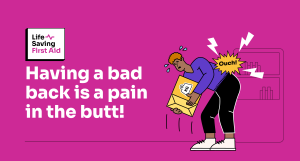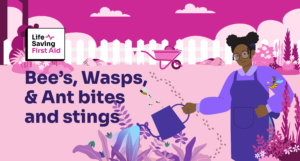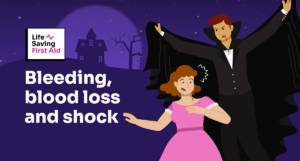Introduction
When faced with multiple casualties the process you should follow is called Triage.
Safety First for Triage
Even if you are faced with a multiple casualty triage situation, your starting point is always DRSABCD and first on the list is Danger.
Conduct a rapid risk assessment for your safety and the safety of those around you. Check for hazards – Physical, Chemical, Biological, Electrical, Mechanical and Psychological and try to minimise the risks.
Body fluids from the casualty present a biological hazard. The risk, you could become infected. Minimise the risk by wearing PPE – Gloves, eyewear, mask etc. Or, if traffic is the hazard, being hit by a car is the risk. Therefore, move to a safer location, put up warning signs or have someone direct and control the traffic to minimise this risk.
Your hazard and risk assessment may even lead you to the conclusion that for your own safety you need to leave the area and contact a specialist emergency service to make the area safe before you can help the casualty.
Your safety is the priority.
What is Triage?

If there are multiple casualties, CALL 000, then you will need to undertake basic triage. Check out this link for more info on 000 calls: https://www.triplezero.gov.au/Documents/TripleZeroFactSheet.pdf
There are also some apps available which can assist. You can find them here: https://lifesavingfirstaid.com.au/blog/todays-first-aid-apps-and-gadgets/
Basic triage is the sorting of multiple casualties by the severity of their injury or illness – from those in most need of assistance to those who require little or no assistance using these categories:
Red Tag
Immediate – use a red tag

Casualties that belong to this category have life-threatening but treatable injuries. Anyone assigned with a red tag requires immediate medical attention. They are also the first to be transported to the hospital when medical help arrives.
Yellow Tag
Urgent – use a yellow tag

These are casualties who sustain serious injuries but can wait for a short time before receiving treatment.
Green Tag
Delayed – use a green tag

Green tag casualties can wait hours to days before treatment. These ‘minor casualties’ are usually separated from the more serious injury by asking them to move to a specific area OR you can ask them to give you some assistance if they are able.
Black Tag
Deceased – use a black tag

The final group in which they categorize as the deceased group or white group. Unfortunately, these are casualties you cannot help, and they cannot be resuscitated.
Conducting Triage

While conducting triage it is important that you only commit to treating someone with catastrophic bleeding. For example a severed limb. Try and stop the bleeding then move on.
OR,
If a casualty is unconscious but breathing, place them in the recovery position and move on.
As a rule of thumb, you can follow this action plan when conducting triage:
1. Stop catastrophic bleeding. Or Place in recovery position if appropriate
2. Are they Walking? YES, then GREEN TAG DELAYED. You can get them to assist you if they are able. Are they walking NO – check their breathing
3. Are they breathing? NO then BLACK/WHITE TAG DECEASED
4. Are they breathing, YES, is it normal? YES, then ORANGE/YELLOW TAG URGENT. NOT normal breathing RED TAG IMMEDIATE.
Remember that triage is an ongoing process so when you have categorised the injured you need to start again. Some of the Urgent may become Immediate, Immediate to the Deceased and even some in the Delayed may need to be reclassified as well.
When you have completed the Triage process, you need to start again. Why? Because the condition of the casualties can change. Some Yellows may become Red, some Reds may become Blacks and so on. Continual reassessment contributes to effective Triage.
Handover to Ambulance
You have already called 000 so when the ambulance arrives you will need to conduct a handover/takeover with the ambulance officer or paramedic.
The details of the incident, as you understand them, the numbers involved, the actions you have taken so far, any relevant timings and the injuries of the casualties can now be relayed to the attending emergency services. Be as clear and concise as you can. State only the facts. There is no need to embellish or add your thoughts unless asked.
Taking control
Don’t panic! If you are first on the scene initially, or the only first aider, you will need to take control. You may need to delegate tasks to others. Locating an AED, CALLING 000 dealing with walking wounded and assisting with CPR. keeping notes etc.
You will need to lead and direct with confidence, making good decisions, acting quickly and in the best interest of your casualty or casualties. Remain calm and focused on the task at hand. You may have to adapt quickly as the situation changes and communicate effectively to others involved. Remember to keep within your own skill level.
Good judgement is essential in directing others such as bystanders, other first aiders, or other resources on the scene to assist as needed.
Main points
Lets’ recap the main points:
• Make sure the area is safe and use PPE
• Use DRSABCD
• Triage the casualties if more than one
• Conduct a secondary assessment
• Be aware of post-incident stress and seek professional help
Well, that’s that. Until next time… Stay safe.
Adrian














